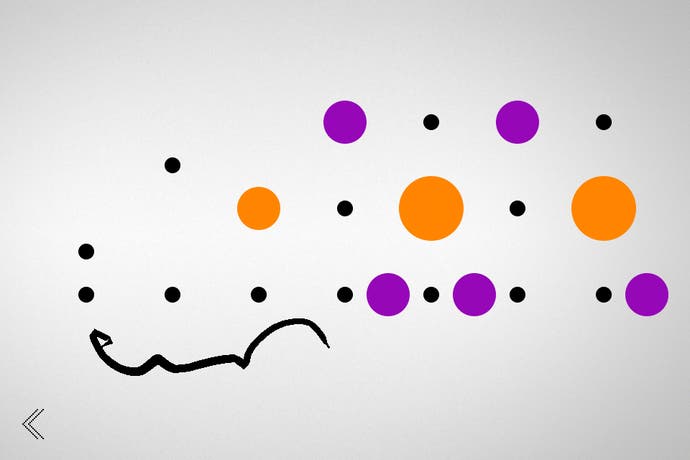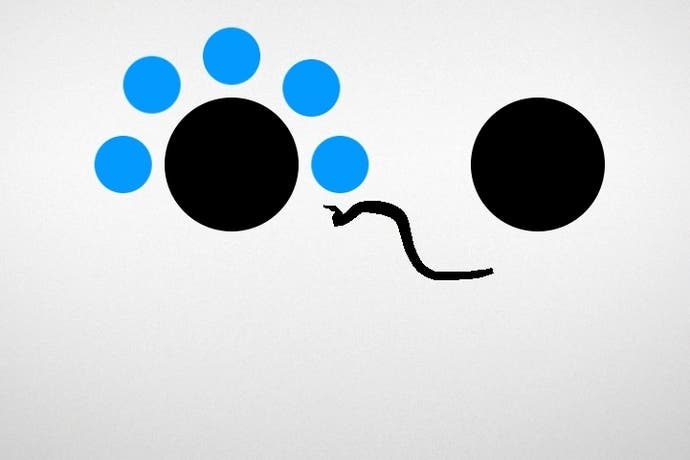Blek review
Line rider.
Hit the coloured dots and avoid the black ones: there are probably a thousand iOS puzzlers that have a comparable agenda. And yet Blek seems like something new. It's a toy as much as a game, and the solution to each challenge feels creative and oddly personal. Let me give you a clue: the answer to puzzle 23 is my middle name. It was for me, anyway. Who knows what it will be for you?
Blek's personal because this is a game about handwriting, when you really get down to it - a game about doodling, about taking a line for a walk and then standing back as the thing you've made comes to life. Faced with each of the sparse white puzzle screens, you draw a shape and watch as it then repeats itself, roving around the playing field, hopefully taking out those coloured dots and avoiding the black ones. If the line hits either the left- or the right-hand side of the screen it will bounce back and keep going. If it reaches the top or the bottom, it will disappear. Levels initially have lots of empty space, but they very quickly start to fill up. Some of the later puzzles are mazes. Some of them are minefields.
It's actually pretty magical watching that line take flight, particularly since Blek not only repeats the shape of your doodle but also captures the speed and hesitancy with which you draw it. The whole thing feels so much more alive as a result, each animation having its own pulse. Beyond that, it allows puzzles that might otherwise only be about looping around various obstacles en route to a target to feature simple timing challenges, too. Certain coloured dots will fire off little projectiles when hit, allowing you to create chain reactions, for example - if you get them at the right moment.

Blek is lots of kinds of puzzle games over the course of its 60 levels. Sometimes it's about reading the negative space and identifying the right shape that will repeat across a busy screen, avoiding dozens of obstacles while connecting with all the dots that matter. Sometimes it's about guessing corner angles and calculating rebounds. Sometimes - the best times - a random squiggle does something extraordinary when animated and clears a level without you even meaning it to. Because it's a game about the most pure and aimless strain of creativity, an unexpected victory isn't as deflating here as it is in other puzzlers. It doesn't make you doubt whether the whole thing actually works in the first place.
And because there's no easy way to repeat a doodle exactly, each attempt at a solution feels fresh, even when it's the product of steady refinement. Why brute-force a solution when Blek wants you to be playful, anyway? The genius of Blek's design is that it channels that weird sense of freedom you get from helping a doodle unfold - the freedom that comes of kicking yourself loose from life's formal structures, even if your only rebellion is seeing where a curving black line will take you. Give in. Draw a little hoop and watch as it spills away from you, rising and dipping like a fountain, like a bird. Blek is special.

